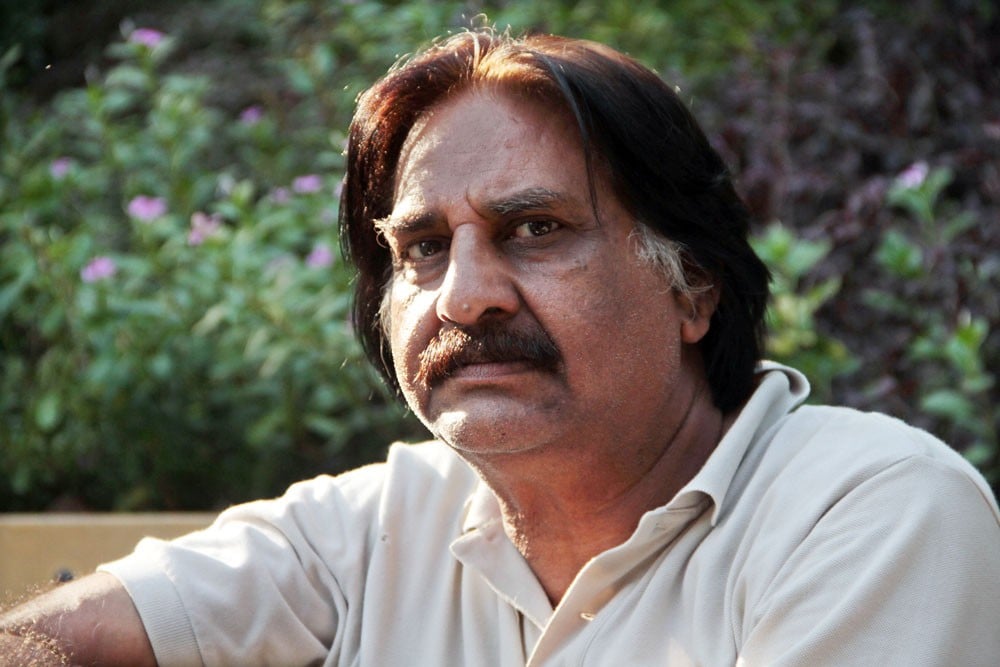
Azhar Hussain Jafri, who passed away last week, not only captured images but also documented movements and revolutions in their purest form

"I know him. He’s Azhar Jafri. He’s a very good photographer," the then Prime Minister Benazir Bhutto said as she was being introduced to the iconic lensman from Lahore at the oath-taking ceremony of Lahore Press Club’s new governing body in 1994.
With hardly a year in journalism behind me, I was overawed, not knowing at the time that I was about to embark on an association lasting over two decades with the photojournalist (as Jafri liked to be known, opposed to a photographer) in question.
Over the next years, like many of his admirers and friends, I opened Dawn each day hoping to catch a glimpse of Azhar Hussain Jafri’s latest snap. If there was one on the front page carrying his byline, even the lead story assumed secondary importance that day. Remember I am talking about an era when the state-run Pakistan Television was the only source of news other than newspapers.
My interaction with Jafri started much after he had made a reputation for himself as a photojournalist. From an ordinary political activist to a vendor in the Walled City or from a policeman to a local musician, everyone seemed to know the tall photographer or, to put it more aptly, acknowledge him as a master of his chosen art. A musician playing with extra vigour or political workers blurting out more charged slogans as soon as they saw Jafri was not an uncommon sight.
For more than four decades, Jafri covered each single important event held in Lahore or across Punjab, first for the Pakistan People’s Party’s Urdu newspaper Musawat, then for the leading English newspaper Dawn and finally for the photographic firm White Star. It was as if it did not happen if Jafri did not cover it!
With his ability to turn the ordinary into extraordinary and an astonishing eye for detail, Jafri excelled in all types of photography though one feels that political movements complemented his dauntless nature, as exemplified during the Movement for the Restoration of Democracy (MRD) during General Ziaul Haq’s dictatorship.
Jafri fearlessly challenged the Zia regime, exposing its brutalities against peaceful protestors and political activists. His photographs of police manhandling political leaders such as Nusrat Bhutto and Benazir Bhutto and revolutionary poets like Habib Jalib gave a new impetus to the MRD movement that had found an unusual supporter and sympathiser in Jafri. While the censorship banned any news considered unfavourable to the dictator’s regime, he used his lens to visually narrate it -- and perhaps more effectively. We remember many distinct episodes from Pakistan’s chequered political history only due to Jafri’s marksmanship.
There are many other sides to Jafri’s personality but each seems to ultimately enhance the range of his photography. His love for and knowledge of music and sports like cricket made him more aware of the situation than his contemporaries; almost intuitively, he would know where the ball was likely to go if a particular type of bowler was operating, or when will the expressions of an instrumentalist be most pleasing to the eye of the viewer.
Years of hardwork and practice ensured that he never got it wrong.
Jafri was different from most, if not all, photographers in the field for many reasons. His President’s Award for Pride of Performance in 2014 notwithstanding, he would never have to chase or ‘arrange’ a photograph. On the contrary, good images chased him. He seemed to be in a constant struggle with extraordinary images, albeit hidden from ordinary eyes, wanting to be captured for eternity. That is perhaps the reason not many fellow journalists could claim to have seen him without a camera hanging down his neck.
When we worked on a documentary on commercial sexual exploitation of children in the late 1990s, titled The silent victims, Jafri assumed the role of director of photography. Though the effort was at best amateurish, considering the resources available at the time, I was pleasantly shocked to notice how everything smoothly fell into place due to his dedication to work and resourcefulness. He knew exactly where to go to shoot a particular scene, at what time and with whom.
Ever ready to capture a fleeting glimpse -- the smile of a girl standing in the fields with a sugarcane in her hand, a mighty flame in a fireplace, an ecstatic dancing to the tune of a frantic dhol player, a fielder taking a diving catch in the slips as the batsman edges an out swinger, the satisfaction on the face of a flute player after getting an act right -- lest it wanders into oblivion, the son of Lahore shall live on through his photographs that succinctly document the political, cultural, social and economic history of the people of Pakistan.